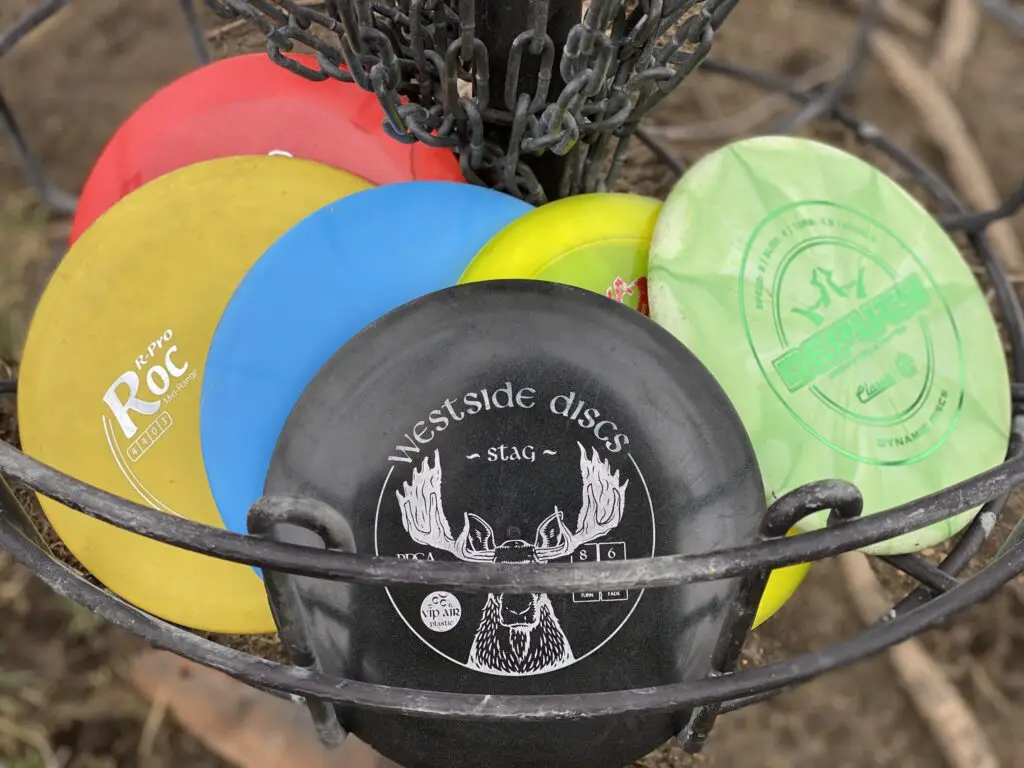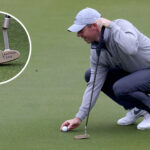Disc golf, a sport that has grown tremendously in popularity over the past few decades, offers players a wide variety of equipment choices, particularly when it comes to the discs themselves. One of the key factors in selecting a disc is the type of plastic used in its manufacture. Each type of plastic offers distinct characteristics that can affect the performance of the disc, including its grip, durability, and flight behavior. In this article, we will explore the common types of plastics used in disc golf and how they can influence your game.
Basic or Standard Plastic
Basic plastics, often referred to by names like DX (Innova), Pro D (Discraft), or Retro (Latitude 64), are the most affordable options. These plastics are known for providing a good grip, even in adverse weather conditions. However, their affordability comes with a trade-off in durability — these discs tend to wear faster and can become more unpredictable in their flight patterns over time.
Mid-Grade Plastic
Mid-grade plastics strike a balance between cost, grip, and durability. Examples include Pro (Innova), X-Line (Discmania), and Elite X (Discraft). These plastics are slightly more durable than the basic plastics and maintain a good grip, making them a popular choice among both beginners and experienced players who want a reliable disc without breaking the bank.
Premium Plastic
For those looking for the best durability and performance, premium plastics are the go-to. These include materials like Star (Innova), Opto (Latitude 64), and ESP (Discraft). Premium plastics are designed to withstand the wear and tear of frequent play and harsh conditions. They tend to maintain their flight characteristics for longer periods, offering consistency that advanced players appreciate. However, they are usually more expensive and can be less grippy in cold or wet conditions.
Ultra-Premium Plastic
Ultra-premium options, such as Champion (Innova), Z-Line (Discraft), and Gold Line (Latitude 64), offer superior durability and performance. These plastics are the hardest and most resistant to scratches and abrasions, which means they maintain their original flight characteristics longer. However, they can be slicker to the touch and may require some breaking in before reaching optimal grip.
Specialty Plastic
Some manufacturers also offer specialty plastics that are designed for specific needs. These can include glow-in-the-dark plastics for night play, translucent plastics for aesthetic appeal, or ultra-light plastics for players with less arm speed.
Specialty plastics can vary widely in terms of grip and durability, and they often cater to niche segments of the disc golf market.
Choosing the right disc golf plastic depends on a variety of factors, including your level of play, typical playing conditions, and personal preferences in feel and durability. Beginners might opt for basic or mid-grade plastics due to their lower cost and good grip, while more experienced players might prefer the consistency and longevity of premium or ultra-premium plastics. Ultimately, experimenting with different types of plastics can help you understand how each affects your play and leads to better, more enjoyable game experiences.
Experimenting and Selecting the Right Plastic
Choosing the right plastic for your disc golf game isn’t just about understanding the different types—it’s also about experimenting with them in various conditions to see how they perform. Here’s how you can approach this selection process:
Trial and Error
One of the best ways to determine which type of plastic suits your style and conditions is through trial and error.
Purchasing a few discs in different types of plastics and using them in various weather conditions can give you a clear idea of how each performs. For instance, you might find that premium plastics perform better in windier conditions, while basic plastics might suffice for calm days on a less challenging course.
Feedback and Reviews
Listening to what other players have to say about different types of plastics can also be incredibly helpful. More experienced players can provide insights into how a certain type of plastic has performed over time. Additionally, many online forums and review sites offer detailed analyses of different discs and their properties, which can help guide your purchases.
Consider Your Play Style
Different types of plastics not only have varied durability and grip but also affect the flight patterns of discs. For example, a disc in ultra-premium plastic might fly straighter and for longer but could be more difficult to control for a beginner compared to the same model in a basic plastic. Consider how the stability, weight, and grip of a disc in a particular plastic type align with your throwing style and strength.
Weather and Course Conditions
The type of course and typical weather conditions you play in should also influence your choice of disc plastic. For muddy, wet courses, a grippier plastic like mid-grade might offer better control. In contrast, for dry and sandy environments, a slicker, more durable plastic might last longer and perform better.
Longevity and Cost-Effectiveness
While premium plastics are more costly upfront, their durability means they might not need to be replaced as often as discs made from basic plastic, which could make them more cost-effective in the long run. This is particularly important for players who play frequently or those who compete in tournaments where consistency in disc performance is crucial.
The Role of Aesthetics
Finally, never underestimate the role of aesthetics in your choice of disc. Many players choose certain plastics simply because they like the look of a translucent or colorfully designed disc. While not the most practical reason, enjoying the discs you play with can add to the enjoyment of the game.
The variety of disc golf plastics available today allows players to tailor their equipment to their specific needs and preferences, enhancing both performance and enjoyment of the sport. By understanding the different properties of each type of plastic and how they align with your requirements, you can make more informed decisions that will help you grow as a player and get the most out of your disc golf experience. Whether you’re just starting out or looking to refine your professional kit, taking the time to explore and understand the nuances of disc golf plastics is a worthwhile investment in your sporting journey.







